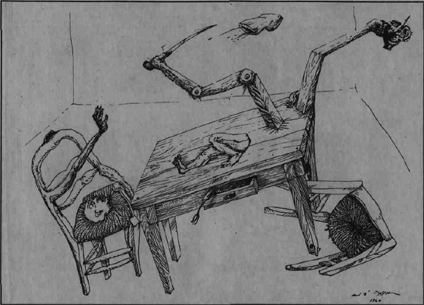Andrew Graham-Dixon investigates the visions of André Masson and hears the sound of One Hand Clapping
THE RULES were simple. "A) Entry into a state similar to a trance. B) Abandonment to interior tumult. C) Rapidity of writing." It sounds like a correspondence course: Write a Romantic Novel and Make Your Fortune, Here's How... It was, in fact, André Masson's formula for bona fide Surrealist art. The point of the game? To produce "automatic" drawings that would meet the first Surrealist Manifesto's call for "Pure psychic automatism", i.e. "The dictation of thought in the absence of any control exerted by reason, and outside any aesthetic or moral preoccupation". Doodle and be enlightened; find emblems of your repressed subconscious in the undergrowth of free-form calligraphy.
The effectiveness of Masson's unconventional working procedures can currently be gauged at the Hayward, where a large selection of his drawings offers a refreshingly monochrome alternative to the garish assembly of Gilbert and Georges in the main galleries. The show opens with a series of drawings that suggest, at first sight, ink-dipped spiders given the run of the sketchpad. On closer inspection, Masson's linear flicks and swirls resolve themselves into serpentine landscapes, cascades and orgies — mostly orgies, since even his landscapes throng with phallic protuberances and gynaecological orifices, hands that grope and fondle, and boulders that cleave suggestively into buttocks.
Masson meant these willed spontaneities to lead straight to his true, instinctual self. Line Unleashed, the title of the show, is something of a misnomer: Masson's line is intended, metaphorically, as an umbilical cord, reaching from the artist's subconscious out and onto the paper. When André Breton, the godfather of the Surrealist movement, wrote his plea for automatism, The Automatic Messsage, he talked of the man who, "lighting his cigar, is unaware that he is...


